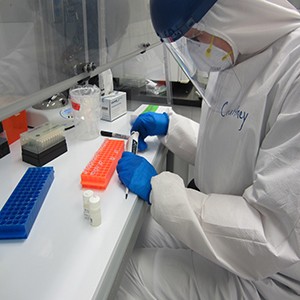NORMAN—University of Oklahoma researchers, led by Courtney Hofman and Rita Austin, in collaboration with the Smithsonian National Museum of Natural History, are addressing the challenges of curating ancient biomolecules and working toward the development and dissemination of best practices. In a recent paper published in the Proceedings of the National Academy of Sciences, Hofman and her collaborators suggest museums play a critical role among stakeholders in ancient biomolecules research and should be responsive to these concerns.
“Ancient biomolecules research has been transformed by new methods, but more dialogue is needed between researchers and museum collections, as historical curation practices can influence biomolecular preservation in unexpected ways,” said Hofman, assistant professor in the Department of Anthropology, OU College of Arts and Sciences, and co-director of the Laboratories for Molecular Anthropology and Microbiome Research. “Biomolecular techniques offer new avenues to understand the past, and curating for biomolecules can increase their research applicability and continuing relevance.”
Biomolecular research has sparked a methodological revolution in the field of anthropology, and museums are now faced with the challenge of conserving and evaluating materials for these new methods. Anthropological collections are important for science and society, due in no small part to their potential applications for biomolecular research. Museums everywhere face challenges to balance the scientific interests, descendant concerns and the need to preserve collections for future generations.
“As centralized places housing biomolecules, disseminating knowledge to the public and connecting stakeholders (including descendant communities), the voice and role of museums is imperative for establishing best practices and standards for molecular research on collections to ensure ethical scientific investigations of museum materials, and support sustainable collaborations,” said Austin, OU graduate student. “Active discussion and consultation with stakeholders continue to be critical for preserving collections and developing innovative research partnerships.”
“To curate the molecular past, museums need a carefully considered set of best practices,” by Hofman and her collaborators is available in the PNAS journal. For more information about this research, contact Hofman at courtney.hofman@ou.edu.


